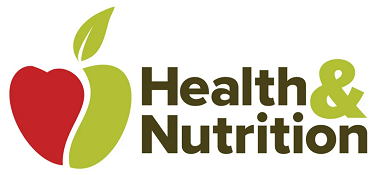1. Periodize your diet according to your training
The vast majority of athletes train according to a plan that alternates between phases of general fitness, specific training, periods of competition and off-season rest. Thus, since training is often based on cycles that vary in intensity and volume throughout the year, the diet must also be adapted to these cycles. In this way, it provides enough energy to meet the needs associated with daily activities, in addition to supporting the training program and ensuring the maintenance of an adequate weight.
A simple way to periodize your diet based on training load is to decrease your energy intake when training volume is lower and increase your carbohydrate and protein intake as training load changes.
Thus, when the level of training is rather low or during a day of rest or very light training, favor a plate providing about 50% vegetables. Divide the second half of the plate equally between starches and proteins. You can complete the meal with a portion of fruit for dessert or as a snack. During periods of more intense training, the proportion of starchy foods can increase to reach half of your plate. Reserve a quarter of the plate for the vegetable portion and the other quarter for the protein portion. For dessert, fruits, dairy products and their alternatives will help you meet your carbohydrate and protein needs.
When you consume your meal or snack is also likely to have a direct impact on your training. So, depending on your schedule, it may not always be possible to stick to just three meals and one or two small snacks. If your workouts take place around mealtimes, it may be more beneficial to focus on spreading your energy intake more widely throughout the day. This will allow you, among other things, to better plan your pre-workout snack so that you can start the session with a good reserve of energy or to opt for a post-workout snack that will ensure optimal recovery. In doing so, the portions consumed at the time of the main meal may be reduced.
Some people will also opt to perform a number of workouts in a context where glycogen stores are lowered, for example by going for a run on an empty stomach in the morning. This practice could, among other things, promote better adaptation to the use of lipids as a source of energy during long-term efforts. Be careful though, training with depleted glycogen stores can be detrimental to intensity training and performance.
2. Choose the right foods before you train
Compared to other sports, running is more likely to cause digestive discomfort due to repeated impacts on the ground. In doing so, it is important to favor foods that are easily digested by opting for choices that contain little fiber and fat at the pre-workout meal. Depending on your schedule, you can opt for a more complete meal about 4 hours before your workout or choose to have a lighter meal and complete with a snack a few hours before your session. Either way, go with your individual tolerance. Some people will prefer to eat foods with a more liquid consistency in the hours preceding their workout so as not to be inconvenienced, while others will see no benefit.
3. Make sure you don’t run out of fuel
For workouts that last an hour or less, there is no need to consume anything other than water during the session. A well-planned pre-workout snack or meal is enough to provide the energy needed during this period.
However, some recent studies have shown that the simple fact of rinsing your mouth with a sugary drink can improve performance during exercise ranging from 45 to 75 minutes. Although within this time the body’s glycogen stores are not completely depleted, oral contact with a sugary solution may stimulate certain areas of the brain, thereby improving training effort. This practice can therefore be interesting if you tend to feel a small drop in energy during your workouts or if your last pre-workout meal or snack was not quite optimal.
When training lasts more than an hour, it may be worth adding a small source of carbohydrates in addition to water. After 60 to 90 minutes of sustained physical activity, muscle and liver glycogen stores are virtually depleted. It therefore becomes necessary to provide an external supply of fuel to your body in order to maintain the same level of effort. So when you want to maintain high carbohydrate availability throughout your workout, consume between 30-45g of carbohydrates per hour. For training sessions lasting more than two hours, it may even be desirable to consume up to 60 g of carbohydrates per hour when the effort is very sustained. Liquid and semi-liquid forms (gel, jelly) are to be prioritized since they are digested more easily, thus ensuring better efficiency and a reduction in gastrointestinal problems. In addition, since the absorption capacity of the digestive tract is limited, it is preferable to distribute the consumption of carbohydrates throughout the training session. Note however that it can also be interesting to carry out a certain number of sessions in a context of limited carbohydrate intake in order to stimulate greater adaptation of the body in a context of endurance tests. The amounts of carbohydrates to consume can also be adjusted downwards depending on the intensity of the effort. it is best to spread carbohydrate consumption throughout the workout. Note however that it can also be interesting to carry out a certain number of sessions in a context of limited carbohydrate.


